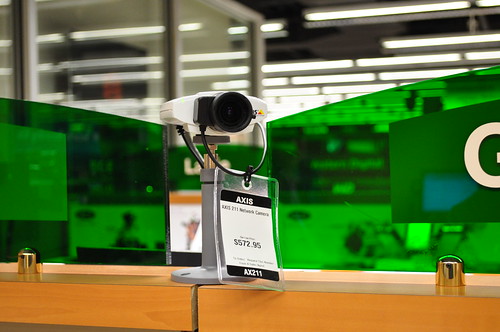
So I went to
ESX 2009 today, in beautiful downtown
Bodymore,
Murderland. Next year's event is scheduled to go down in
Pittsburgh. Candidates for
ESX 2011 include the Gaza Strip, the South Bronx, and a Carnival Cruise ship anchored off the coast of Somalia. I suppose the
show's organizers think that security professionals are a rough, tough breed who won't be scared of a little crime. That, or it's cheaper to hold a convention in a town that doesn't usually get conventioneers. Sam
Pfeifle is a
bit more charitable. But then, he's a better person than I am.
I kid! I kid because I love! I like Baltimore. My wife is from Baltimore. We had our first date at the
Baltimore Aquarium, a short walk from where the convention was held. But, still, Baltimore (like Pittsburgh) is not what you'd consider glamorous, like New York, or
Las Vegas.
In other news,
ASIS 2009 will be in
Anaheim. California.
Speaking of Sam
Pfeifle, I couldn't help but notice I'm not one of the 20 under 40. Oh, well, always next year, when I'll still be younger than anyone on the list this year. Has a 25 year old ever made that list?
Anyway, on to the show review.
I mainly hit this show in order to attend the Axis vendor training I saw advertised on a banner ad on top of the
Security Info Watch forums (which you should sign up for if you like this blog). The training was excellent and totally worth the trip from New Jersey (YMMV). I was worried that it would just be the PowerPoint version of
Axis' highly controversial TCO 'study', but they mostly skipped the propaganda and just answered the hardest question anyone in
IP surveillance has to address: why go
IP instead of analog?
The training was aimed at street-level sales people and dirty-pants installers, and strove mightily to give them a reason to recommend
IP cameras instead of analog systems for medium sized jobs. The reasons why you might want to go
IP have been hashed and rehashed and hashed further still elsewhere, but suffice it to say that the Axis guy did not hesitate to admit that 1)
IP is nearly impossible to implement unless you know networking or can hire someone who does, 2)
IP is often more expensive, and 3) in at least some cases, the customer would be better served by an analog solution.
Of course, there is a word for convincing the customer to spend more money than they had planned, based on the salesperson's knowledge of the product and the specific issue the customer is trying to address. Well, there is more than one word, but this is a family blog, and the word we're looking for here is "salesmanship". You may argue that the customer does not want to spend the money on
IP cameras, but I would like to point out that to the customer, the ideal security project is completely free and solves all past, present, and future security issues forever and ever. Ain't gonna happen. Sure the customer doesn't want to spend
IP money, but if you are a sales professional, it's your job to show them why spending
IP money is a good idea.
After the seminar concluded, I hit the show floor. Unfortunately, Northern Video did not have a booth at the show, so I remained completely sober all day. I went to the Panasonic booth, and despite what I've been saying all over the Internet, Panasonic has not in fact shut down their analog R&D, and in fact had a new analog camera and a new
DVR to brag on. The camera, the WV-CW504 (which apparently debuted at
ISC West but I did not attend
ISC West,
grrr) is
awesomesauce. Very pretty picture, using the new SD5 .
From here on in, analog cameras will use the new SD5 chip (
SuperDynamic 5, replacing the
SDiii image sensor) and
IP cameras will use the
MegaSD chip. Either way, the WV-CW504 will eventually replace the
CW484 series. Street date is, like,
Augustish. They did not have the
DVR to show, but said the street date is something like
Octobertime.
I stopped by the
Mace booth, which was being manned by Dennis
Raefield personally. We spoke about central station video monitoring, and how cool it would be if we could sell it. He told me about an all-in-one
DVR Mace is going to be putting out. He told me that returns are down at Mace (which I see myself- we sell a ton of Mace stuff and returns for non functioning and malfunctioning product is way down, not that it was ever anything more than a minor concern, despite our no-questions-asked return policy).
Good for Mace, I want them to do well. Best user interface on a
DVR I've ever seen- a retarded iguana can drink a pint of vodka and still figure out how to program a Mace
DVR in a few minutes. Imagine how fast your end user can figure out a Mace
DVR if they have thumbs.
Also said hi to
Geoff Kohl of Security Info Watch. He's a cool guy. Hi, Geoff!
Overall, good show. I like the fact that the focus was on the installer, rather than the buyer or the
CSO- I started out as an installer and I'm a dirty-pants kind of guy despite my suit. Freebies were not very impressive, although
Wynit gave out thumb drives and Axis had a very
substantial notebook. I got one "extra large" t shirt from Canon, and although I haven't tried it on I know that the Japanese define "extra large" very differently than Americans do.
I will probably be back next year.















